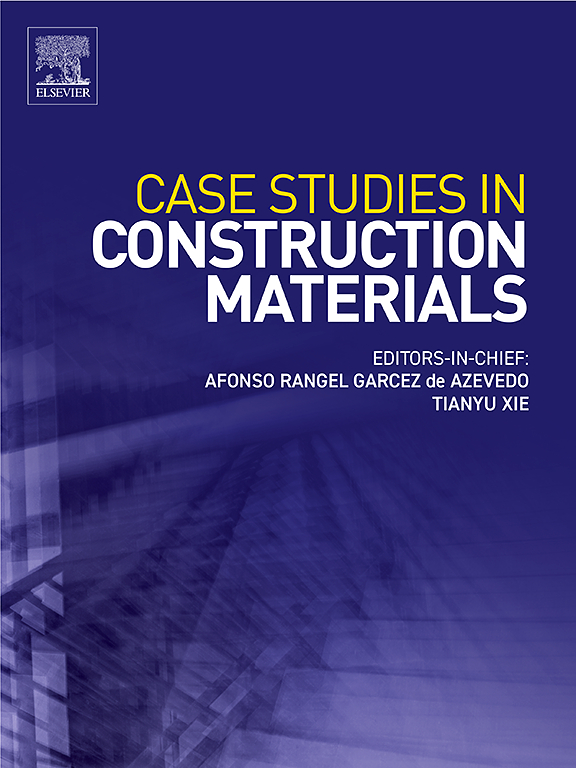基于相控阵超声和深度学习的水下混凝土桥梁结构内部缺陷检测
IF 6.6
2区 工程技术
Q1 CONSTRUCTION & BUILDING TECHNOLOGY
引用次数: 0
摘要
水下混凝土结构是跨水桥梁的关键承重构件,其内部缺陷往往会影响其长期完整性。传统的检测方法主要集中在表面缺陷,在检测内部结构问题方面存在不足,在维护和安全评估方面存在很大差距。提出了一种基于相控阵超声检测和深度学习的水下混凝土桥梁内部缺陷检测方法。首先,研制了一种新型水下超声成像装置,采用非局部手段滤波来降低噪声,提高超声成像质量。其次,创建了一个描绘水下混凝土内部缺陷的超声波图像的小规模数据集,并使用StyleGAN2-ADA进行有效的数据增强,解决了数据可用性有限的挑战。为了进一步改进缺陷检测,引入了一种增强的基于sam的方法,利用串行和并行深度适配器微调策略,显著提高了模型对复杂水下超声成像任务的适应性。此外,开发了一种基于金字塔模块的自生成提示编码器,以优化特征提取,减少人工干预。室内试验和实际水下桥墩试验结果均表明了该方法的优越性。该检测模型获得了0.772的交集(IoU)分数,比基线SAM模型提高了4.49 %,并且在精度、召回率和f1分数方面优于其他方法。该研究为水下混凝土桥梁结构内部缺陷检测提供了一种鲁棒、高效、可扩展的解决方案,在结构健康监测方面具有强大的实际应用潜力。本文章由计算机程序翻译,如有差异,请以英文原文为准。
Phased array ultrasonic and deep learning based internal defect detection in underwater concrete bridge structures
Underwater concrete structures, which are critical load-bearing components in water-crossing bridges, are often prone to internal defects that undermine their long-term integrity. Traditional inspection methods, which mainly focus on surface defects, fall short in detecting internal structural issues, creating a significant gap in maintenance and safety assessments. This study proposes a phased array ultrasonic testing (PAUT) and deep learning based internal defect detection method in underwater concrete bridges. First, a new underwater PAUT device is developed, incorporating non-local means filtering to reduce noise and enhance ultrasonic imaging quality. Second, a small-scale dataset of ultrasonic images depicting internal defects in underwater concrete is created, and StyleGAN2-ADA was employed for effective data augmentation, addressing the challenge of limited data availability. To further improve defect detection, an enhanced SAM-based method is introduced, utilizing both serial and parallel depth-wise adapter fine-tuning strategies, which significantly boost the model's adaptability to complex underwater ultrasonic imaging tasks. Additionally, a pyramid-module-based self-generating prompt encoder is developed to optimize feature extraction and reduce manual intervention. Experimental results on both laboratory specimens and real-world underwater bridge piers demonstrate the superior performance of this method. The detection model achieves an Intersection over Union (IoU) score of 0.772—an improvement of 4.49 % over the baseline SAM model—and outperforms other approaches in precision, recall, and F1-score. This research presents a robust, efficient, and scalable solution for internal defect detection in underwater concrete bridge structures, with strong potential for real-world applications in structural health monitoring.
求助全文
通过发布文献求助,成功后即可免费获取论文全文。
去求助
来源期刊

Case Studies in Construction Materials
Multiple-
CiteScore
7.60
自引率
19.40%
发文量
842
审稿时长
63 days
期刊介绍:
Case Studies in Construction Materials provides a forum for the rapid publication of short, structured Case Studies on construction materials. In addition, the journal also publishes related Short Communications, Full length research article and Comprehensive review papers (by invitation).
The journal will provide an essential compendium of case studies for practicing engineers, designers, researchers and other practitioners who are interested in all aspects construction materials. The journal will publish new and novel case studies, but will also provide a forum for the publication of high quality descriptions of classic construction material problems and solutions.
 求助内容:
求助内容: 应助结果提醒方式:
应助结果提醒方式:


